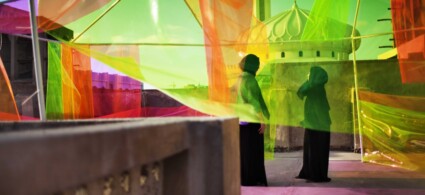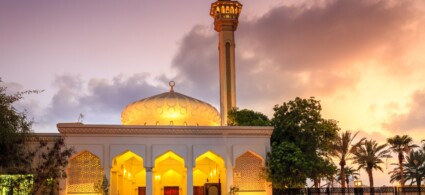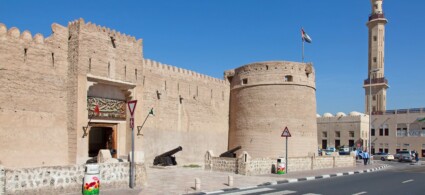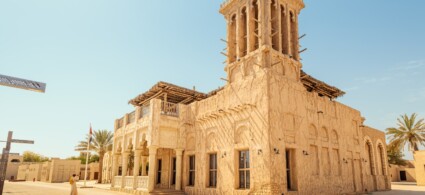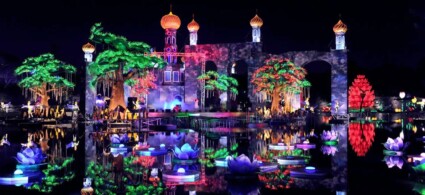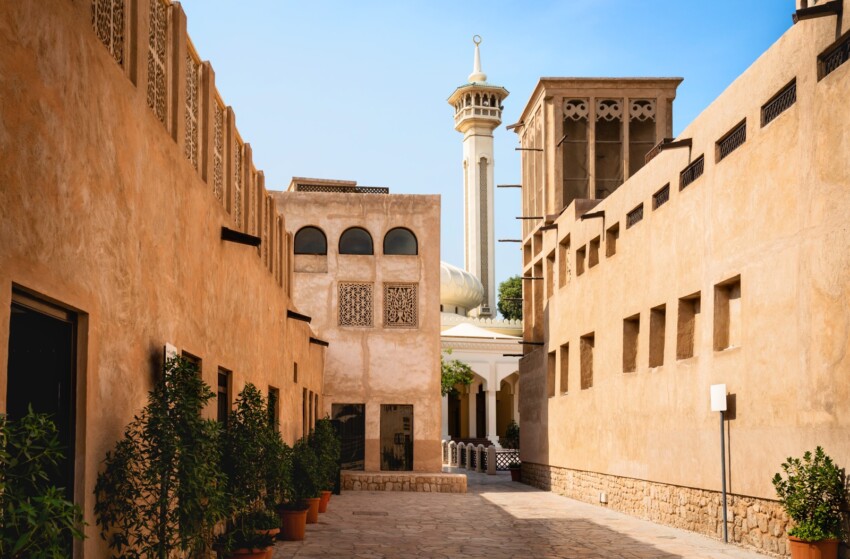

Bur Dubai, not to be confused with Burj Dubai, which was the former name of the Burj Khalifa, is a district of the city of Dubai overlooking the western side of the Creek. The literal translation of ‘bur’ is ‘dry land’, so the origin of the name is clear: it served to distinguish this area from Deira, the neighbourhood historically located ‘on the other side’ of the Creek.
Starting in 2008, a huge engineering effort was undertaken to extend the Creek to the sea, thus turning Bur Dubai into an island. Today Bur Dubai is a densely populated area consisting mainly of residential buildings and flats. Bur Dubai is what could be called the ‘centre’ of the city, only for the fact that this is where it all began, when Dubai was just a small fishing village.
Testimony to the past is the Bastakiya district, but also the house of Saeed Al Maktoum, built along the Creek in 1894 and now converted into a museum, which contains artefacts and images of the old city of Dubai. It was the residence of Saeed bin Maktoum bin Hasher Al Maktoum, the former ruler of Dubai.
Today, Bur Dubai and Deira are very well connected. Apart from pleasant crossings of the Creek on traditional Abra boats, it is possible to cross to the other side at one of five crossings: the Al Maktoum Bridge, the Al Garhoud Bridge, the Suspension Bridge, the Business Bay Crossing and the Al Shindagha Tunnel.
Nowadays Bur Dubai is a very active and vibrant part of the city. Although it does not include any top-notch hotels or breathtaking attractions, there are numerous mosques, including the Grand Mosque, for which the city’s tallest minaret was built, and the Iranian Mosque, with its beautiful blue tiles. This area is also home to the country’s only Hindu temple, located right between the Grand Mosque and the Creek.
There is no shortage of shopping opportunities in the Bur Dubai district: the Bur Dubai Souk, also known as the cloth souk, is a good example (but watch out for the vendors, who can be quite annoying and pushy in convincing you to enter their shops).
For those who like more modern shopping malls and large international chain shops, Bur Juman is the place to be: it is a four-storey mall with over 300 shops, and is one of the oldest malls in Dubai, still one of the largest in the city, although its charm and importance have declined sharply in recent years due to the construction of the much more iconic Mall of the Emirates and Dubai Mall.
Another of the city’s oldest shopping malls is undoubtedly the Lamcy Plaza, also located in the Bur Dubai district. It has three floors and houses over 150 shops.
The Wafi Mall, on the other hand, is rather modern, its architecture is inspired by ancient Egypt and it houses mainly luxury boutiques, jewellery and high fashion. It is also home to numerous upscale bars and restaurants (many of which serve alcohol) and a luxury spa.

